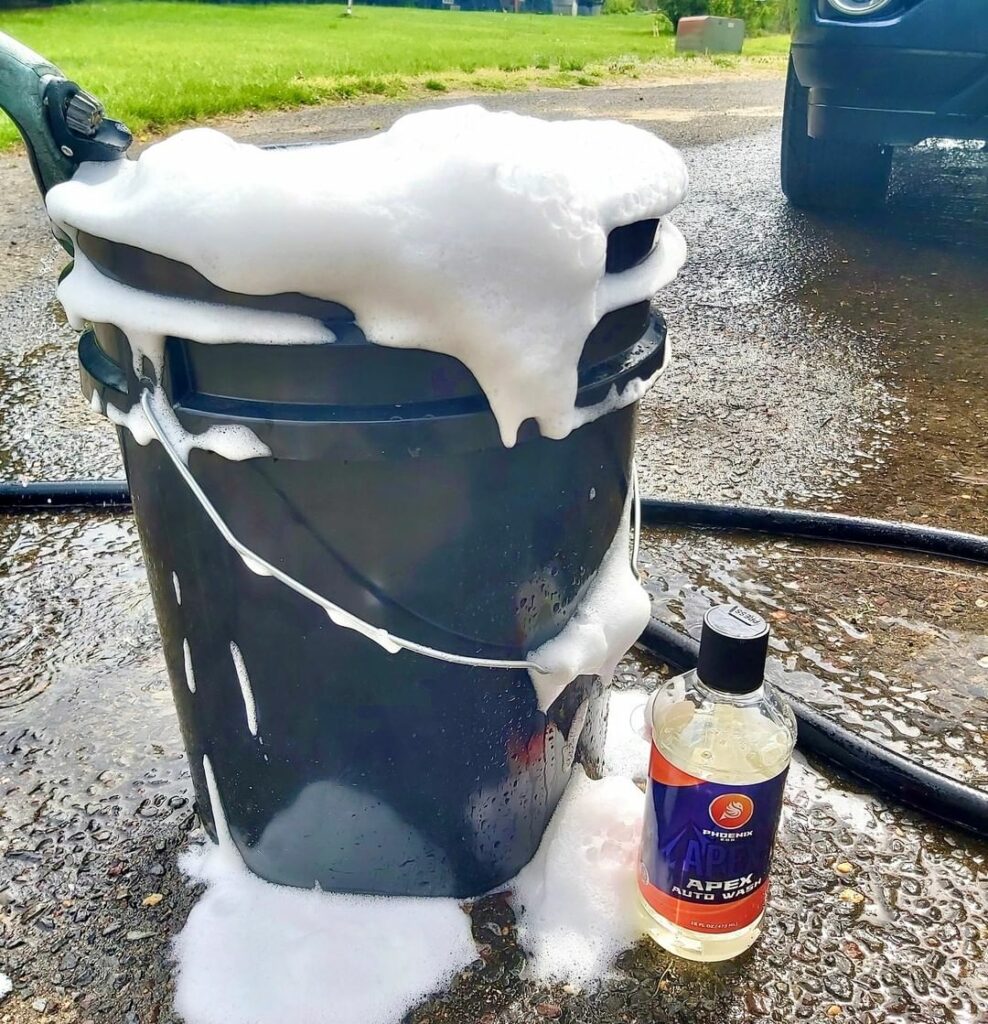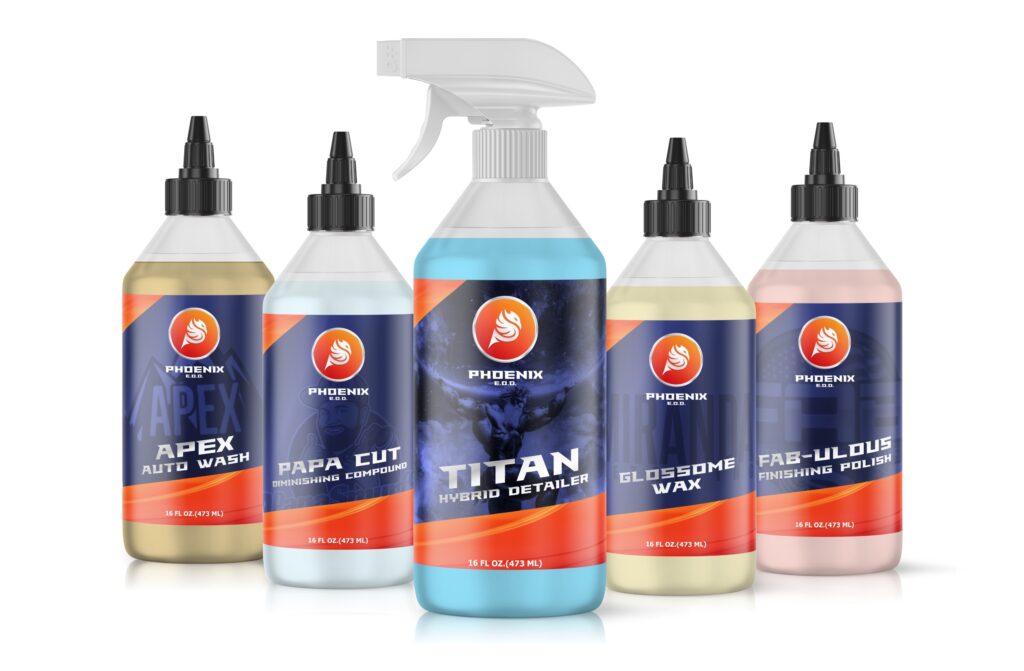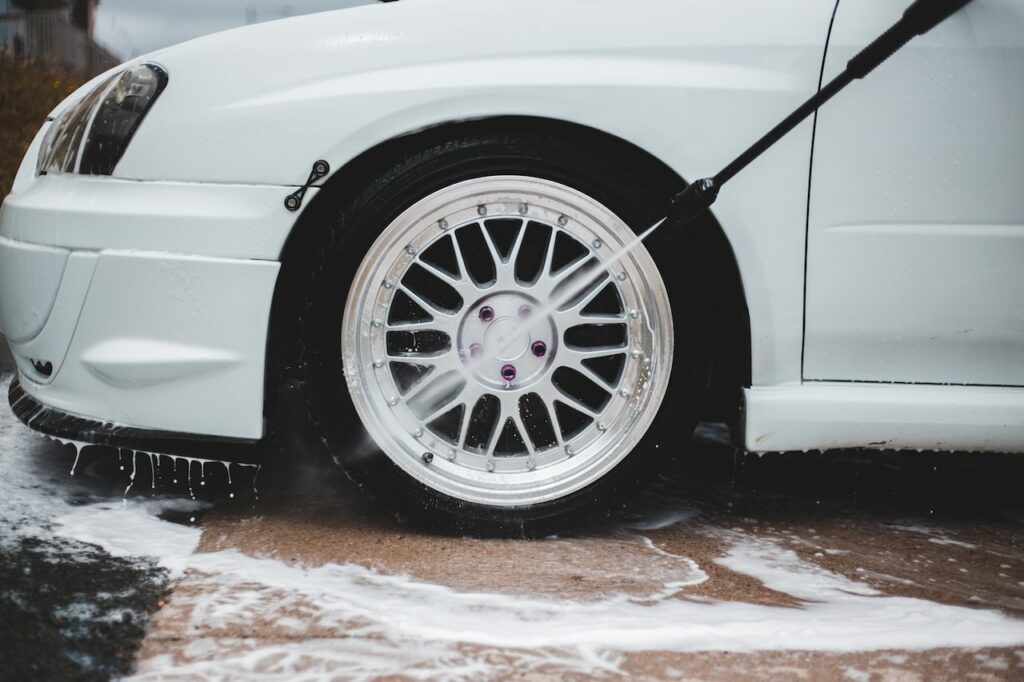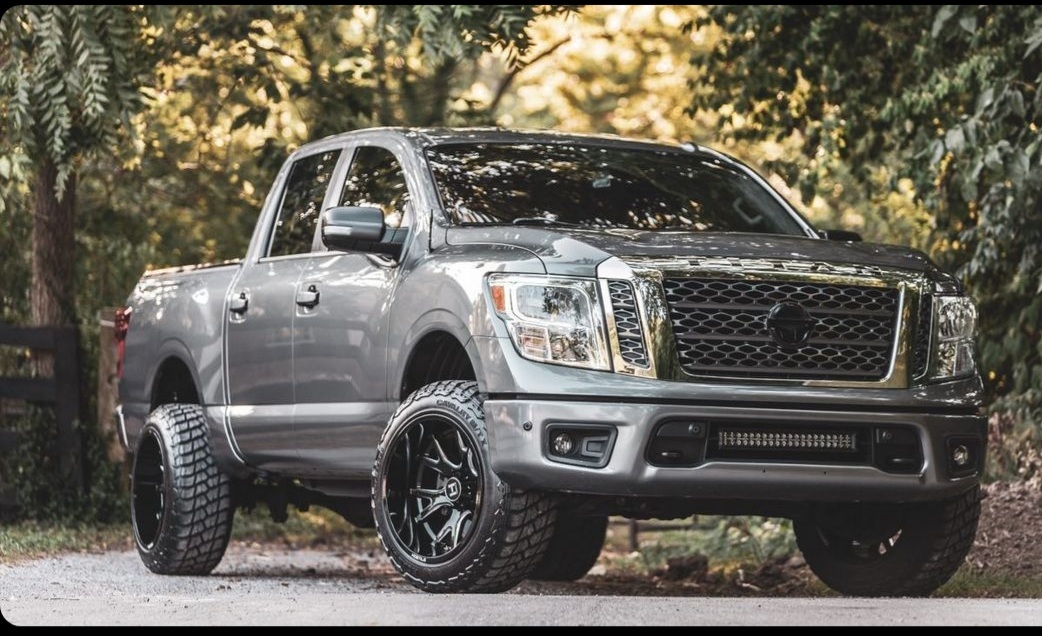As car enthusiasts, we understand that your vehicle is more than just a means of transportation—it’s an investment that deserves the utmost care and attention. In this blog post, we will explore the importance of regular car detailing, its numerous benefits, and the key components of a thorough detailing process. Additionally, we’ll discuss how to choose the right car care products and establish a regular detailing routine to preserve your vehicle’s resale value and ensure a lifetime of pride and enjoyment.
Introduction
A car is more than just a means of transportation; for many of us, it is an extension of our personality and a significant investment. As proud car owners, we want to ensure our vehicles look their best and maintain their value over time. One crucial aspect of achieving this goal is regular car detailing. Detailing is the process of thoroughly cleaning and restoring a car’s interior and exterior surfaces to their original condition or even better.
Car detailing goes beyond a simple wash and wax, addressing aspects like paint correction, ceramics coating, and using high-quality car soaps, iron removers, and specialty products to protect your car’s appearance and its value. In this blog post, we will discuss the importance of regular car detailing, the benefits it offers, key components involved in the process, and how to choose the right detailing products.
The Benefits of Regular Car Detailing
By investing time and effort into regular car detailing, you not only protect your financial investment but also enjoy a range of benefits that contribute to an improved driving experience. These benefits include:
Enhanced Appearance and Pride of Ownership
A well-maintained, detailed car is a pleasure to look at and drive. Proper detailing brings out the best in your vehicle’s paintwork and interior surfaces, giving it a showroom-like appearance. Moreover, taking pride in your car’s appearance reflects positively on you as a responsible and meticulous car owner who values their investment.
Preserving the Paint Condition
The paint on your car’s exterior is constantly exposed to harsh environmental factors like dirt, dust, and UV rays, which can cause dullness, fading, and even oxidation over time. Regularly detailing your car, including washing, paint correction, and applying ceramics coating, helps protect your paint from these factors and ensures it remains pristine and eye-catching.
Maintaining Optimal Interior Comfort
A clean, well-maintained interior not only contributes to your driving enjoyment but also helps maintain a healthy environment within the car. Regular detailing, including vacuuming, steam cleaning, and conditioning of upholstery and other interior surfaces, eliminates dirt, allergens, and odors that can accumulate over time.
Increased Safety and Visibility
Regular car detailing also plays a role in ensuring the safety of you and your passengers on the road. Cleaning windows, mirrors, and headlights improves visibility, making it easier for you to see and be seen by other drivers. Additionally, well-kept tires with proper dressing offer better traction and handling, further enhancing your vehicle’s safety.
Improved Resale Value
When the time comes to part ways with your car, a well-maintained and detailed vehicle will undoubtedly fetch a better price than a neglected one. Regular detailing not only preserves your car’s appearance but also demonstrates to potential buyers that you have taken good care of the vehicle, giving them confidence in their investment.
In summary, regular car detailing is essential for maintaining your car’s appearance and value. By investing in the right products and techniques, you can preserve your vehicle’s condition and enjoy an enhanced driving experience. In the following sections, we will delve deeper into the key components of car detailing, how to choose the right products, and tips for establishing a regular detailing routine.
Key Components of Car Detailing
Car detailing involves a thorough cleaning and restoration process that aims to enhance the appearance and maintain the overall condition of your vehicle. By addressing various aspects of car care, detailing ensures the longevity of your investment. Here are the key components of a comprehensive car detailing process:
Washing and Drying

The first step in car detailing is a thorough wash to remove dirt, grime, and other contaminants from the vehicle’s surface. This process typically involves using a high-quality car soap or shampoo, along with specialized tools such as microfiber wash mitts, soft brushes, and high-pressure water hoses. After the vehicle is washed, it is essential to properly dry the surface to prevent water spots and streaks. Microfiber towels and air blowers are commonly used to ensure a spotless finish.
Paint Correction and Polishing
Over time, your car’s paint can develop imperfections such as swirl marks, scratches, and oxidation. Paint correction is the process of removing these blemishes and restoring the paint’s original appearance. This involves using various polishing compounds, abrasive pads, and specialized machines, such as dual-action polishers, to remove a thin layer of clear coat and reveal a fresh, blemish-free surface. After paint correction, the paint should have a smooth, glossy finish. Polishing not only enhances the appearance but also prepares the paint for the next step in the process: applying a protective coating.
Ceramics Coating and Sealants
To preserve your car’s paint, it’s essential to apply a protective layer that guards against harmful environmental factors such as UV radiation, acid rain, bird droppings, and more. Ceramic coatings and sealants are commonly used products in this process. They create a hydrophobic surface, which allows water, dirt, and other contaminants to easily slide off, minimizing the chance of damage to the paint. While ceramic coatings provide a more durable and long-lasting protection, sealants are easier to apply and maintain but may require more frequent reapplication.
Wheel Cleaning and Tire Dressing
Wheels are exposed to abrasive brake dust, dirt, and grime, which can cause corrosion and damage if not cleaned regularly. Iron removers and specialized wheel cleaners help break down and remove these contaminants without damaging the wheel finish. After cleaning, a tire dressing is applied to restore the rubber’s appearance and provide additional protection against UV radiation and road grime. This process not only enhances the overall appearance of the vehicle but also extends the life of your wheels and tires.
Interior Cleaning and Conditioning
A car’s interior requires regular cleaning and maintenance to remain comfortable and visually appealing. Interior detailing involves thoroughly vacuuming, shampooing, and deodorizing the carpets, fabric seats, and floor mats. Leather surfaces are cleaned with a gentle pH-balanced cleaner and then conditioned to maintain their softness and prevent cracking. Plastic and vinyl surfaces, such as the dashboard, door panels, and console, are also cleaned and protected with a UV-resistant dressing. Lastly, all glass surfaces, including windows and mirrors, are cleaned for improved visibility and aesthetics.
Choosing the Right Car Detailing Products

The success of car detailing largely depends on using the correct products for each task. It is essential to select high-quality car care products that are specifically designed to address the various needs of your vehicle. Here are a few types of detailing products and their purposes:
Car Soaps and Shampoo
A high-quality car soap or shampoo is essential for effectively removing dirt and contaminants from the vehicle’s surface without causing damage. Look for products that are pH-balanced, gentle on the paint, and produce a rich, long-lasting foam. Many car soaps also contain lubricants that help minimize friction between the wash mitt and the paint surface, reducing the risk of swirl marks and scratches.
Iron Removers and Wheel Cleaners
Iron removers and wheel cleaners are designed to break down stubborn brake dust, road grime, and rust deposits. These products usually contain a chemical called phosphoric acid, which reacts with iron particles, dissolving them and allowing them to be rinsed away easily. When selecting a wheel cleaner, look for products that are safe for all types of wheel finishes and can be used on both wheels and tires.
Waxes, Polishes, and Compounds
Waxes, polishes, and compounds are essential for maintaining your car’s paint and providing a glossy, like-new finish. Polishing compounds are used for paint correction, while waxes and sealants offer protection and a brilliant shine. Choose a product based on your car’s paint condition and your skill level, as some products require more expertise for proper application.
Interior Cleaners and Conditioners
Having the right products to clean and maintain your car’s interior is crucial for maintaining a comfortable and visually appealing environment. Look for pH-balanced leather cleaners and conditioners, as well as gentle cleaners for plastic, vinyl, and fabric surfaces. Additionally, seek out UV-resistant dressings to protect against sun damage and ensure the longevity of your interior materials.
Establishing a Regular Detailing Routine

Establishing a regular car detailing routine is essential to protect your investment and keep your vehicle looking its best. There are various factors to consider when determining how often you should detail your car and whether to do it yourself or hire a professional.
DIY vs. Professional Detailing
While many car enthusiasts enjoy the satisfaction of detailing their vehicles themselves, others may prefer to utilize the services of professional detailers. The choice largely depends on your level of interest, available time, and budget. DIY detailing can save you money and allow you to maintain a closer connection with your vehicle. On the other hand, professional detailers have the expertise, tools, and resources to provide an exceptional level of service and achieve superior results.
How Often Should You Detail Your Car
The frequency of your car detailing sessions depends on several factors, such as your vehicle’s usage, exposure to environmental elements, and personal preferences. Generally, it is recommended to perform a thorough interior and exterior detailing every three to six months. However, more frequent cleanings may be necessary for vehicles exposed to harsh weather conditions, heavy industrial fallout, or extensive dirt and grime.
Tips for Maintaining Your Car’s Appearance Between Detailing Sessions
To protect your investment and maintain your vehicle’s appearance between detailing sessions, follow these simple steps:
- Regularly wash your car using a high-quality car soap and a microfiber or lambswool wash mitt to prevent scratches and swirl marks.
- Apply a quick spray wax or sealant after each wash to provide added protection and shine.
- Clean your wheels and tires frequently using dedicated wheel cleaners and tire dressings.
- Vacuum your car’s interior and wipe down surfaces with a mild interior cleaner or disinfecting wipes.
- Apply UV protectant to exposed plastic and rubber surfaces to prevent fading, cracking, and discoloration.
- Keep a microfiber towel and quick detailer spray in your vehicle to quickly remove bird droppings, tree sap, and road grime that could potentially damage your paint.
Conclusion
By implementing a regular car detailing routine and using quality products, you can effectively protect your vehicle’s appearance, enhance its value, and enjoy the numerous benefits of driving a well-maintained car.
At Phoenix E.O.D., we’re a family of car lovers dedicated to creating top-notch vehicle detailing products that keep up with the ever-changing automotive world. We believe in the power of growth, connection, and learning from one another. Our mission is to work hand-in-hand with our customers, industry experts, and fellow enthusiasts to constantly evolve and provide real-world solutions that make your cars shine.
Give our Phoenix E.O.D products a try, and if you have any questions or need expert advice, don’t hesitate to contact us at Phoenix E.O.D. Our team of car care professionals is ready to help you achieve the perfect finish.
Frequently Asked Questions
Q: What is the difference between paint correction and paint protection?
A: Paint correction refers to the process of removing defects in the car’s paint, such as swirl marks, scratches, or oxidation. This is usually done through techniques like compounding, polishing, and wet-sanding. Paint protection, on the other hand, involves applying a protective coating—such as wax, sealant, or ceramic coating—to prevent damage from environmental elements and enhance the paint’s gloss and durability.
Q: What should I look for in a high-quality car soap?
A: A high-quality car soap should have the following attributes: pH-balanced, biodegradable, lubricating properties to minimize surface scratches, and a high foam content for effective dirt removal. Avoid using household detergents or dishwashing soaps, which could strip the protective wax or sealants from your car’s surface.
Q: How long does it take to detail a car thoroughly?
A: The time it takes to detail a car thoroughly depends on the size of the vehicle, its condition, and the level of detail you wish to achieve. For a casual DIY detailer, it could take anywhere from three to six hours for a compact car and up to eight hours or more for larger vehicles. Professional detailers may have the tools and experience to complete the process more efficiently.
Q: Are ceramics coatings worth the investment?
A: Ceramic coatings offer a more durable and longer-lasting protection for your car’s paint compared to traditional wax and sealants. Ceramic coatings bond to the paint, providing a hydrophobic effect, resistance to UV rays, and increased resistance to scratches and chemical contaminants. While the initial investment may be higher, their long-lasting durability makes them an excellent choice for paint protection.
Q: How can I prevent scratches and swirl marks on my car’s paint?
A: Preventing scratches and swirl marks on your car’s paint involves practicing proper washing and detailing techniques. Use a high-quality car soap, a microfiber or lambswool mitt, and a two-bucket wash method to minimize the risk of introducing scratches during the washing process. Dry your vehicle using a microfiber drying towel with a blotting or patting motion instead of rubbing.
